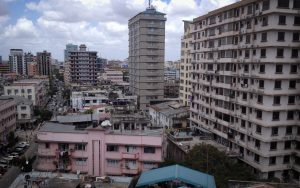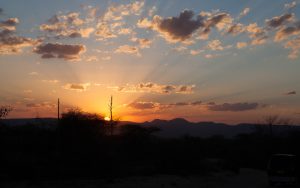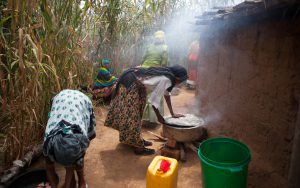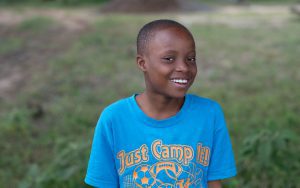Storytelling is a huge part of the Tanzanian culture, and when Moshi and I worked together, simple questions turned into long, drawn-out stories.
One day, I asked how many tourists came through Kondoa, and he told me about almost every person that has ever come through. Although that may have been a slight exaggeration, it made getting any work done almost impossible, which was unfortunate, because I’d soon be meeting with Ikaji again.
Storytelling culture extended to Tanzanian businesspeople as well, but it never really entered into my conversations with Ikaji, which probably started us off on the wrong foot. But I just didn’t want to waste time, especially since I had so little to spare. On top of that, I also rejected traditional gender roles, and I didn’t shy away from voicing my opinion. I was in no way pretending to be a corporate business woman; I was a creative entrepreneur and a woman. These things probably rubbed Ikaji the wrong way. Moshi and I had been working together for years at this point, and we understood all of each other’s quirks. We had different opinions, but we respected and understood each other—something that couldn’t be said for Ikaji and me.
I didn’t want to think about our meetings.
Moshi and I kept moving forward with the tours. We were creating a brochure and needed to take pictures, so we headed for the small villages—Kolo, Ntomoko, and Haubi—surrounding Kondoa to snap a few shots.
We started the day early and rented a car and a driver, and grabbed one of Moshi’s friends. Our destination was Ntomoko falls, and along the way, we passed one of the small villages during their market day. Market day was a big deal in these villages, and people came from all over to get supplies like sugarcane and produce and shoes and haircuts, or anything else you might need to run a household. You could also buy cows and chickens, and you might even find a snake charmer or two.
About a mile from the market, we encountered some deep, muddy tracks filled with water from a recent downpour. The driver revved the engine and tried to make it through. We made it about halfway to the other side before getting stuck. It was market day, and there were hundreds of people in the area, so everyone stopped to help or at least to offer us some advice. Over an hour later, we finally got another truck to pull us out, but then he got stuck, so we helped him, which took even longer. We kept going, but in the back of my mind, I wondered how we were going to get back.
We stopped at the market to take a few pictures and get some snacks for the car, and then we headed to Ntomoko falls, the water source that served over 20,000 people in the region. The idea of this tour was to begin at the reservoirs, and then trek through the forest to the waterfall, so we met the watchman who took us to the big tank. Along the way, we had to cross a small bridge and I stepped off it accidentally. My foot landed in loose sand, almost like quicksand, and I started sinking. Moshi and the others grabbed my hand, and—much like the car—I had to be pulled out. And this sand pit was deep, so If no one had been around to help me, I would have been swallowed by the sand—forever. This moment was the closest I’ve ever knowingly come to dying, but dripping and wet, we kept moving.
After an hour, we had trekked through the forest to the top of the mountain. It was beautiful and overlooked a crater as well as a small stream of water that was cascading down the mountain—a waterfall. I was happy that we had made it but more happy we would be heading back. Instead, Moshi decided to go down the mountain so that we could see it from the bottom. I had to avoid the fiery bites of the red ants that periodically crawled up my leg on our long hike down. I hadn’t planned for any of this, so I was still in my flip flops, and the entire trip down was about as unpleasant as possible. Just as we were almost at the bottom, I grabbed onto a tree and started crying. I was stuck. It wasn’t dangerous or anything, but I just didn’t want to go any farther. Moshi convinced me to keep moving and only two minutes later, we were at the bottom, and it was stunning and I can’t imagine having missed it. We sat and watched the waterfall and took pictures and breathed in the fresh air.
The pictures didn’t capture it—you had to climb down to feel the beauty.
Being stuck only lasts a moment—sometimes a long moment—and at some point, you have to make a decision one way or another about what to do. Back when the car was stuck on the way out here, we kept digging and eventually called a truck, and finally we weren’t stuck anymore. Or when we got the well dug in Cheku, but needed a pump so that people could actually use the water. At that moment, I had no idea how we were going to ever get the money for a pump, but we found a way. I had a choice during the trek whether to remain clinging to a tree and waiting, or to continue down—and I chose to continue. Being stuck can be fun, really, and when you wonder how you are going to get back, you always find a way. You find that little bit of extra inside of yourself and you just keep going, and then when it’s over you feel more than alive.






















































